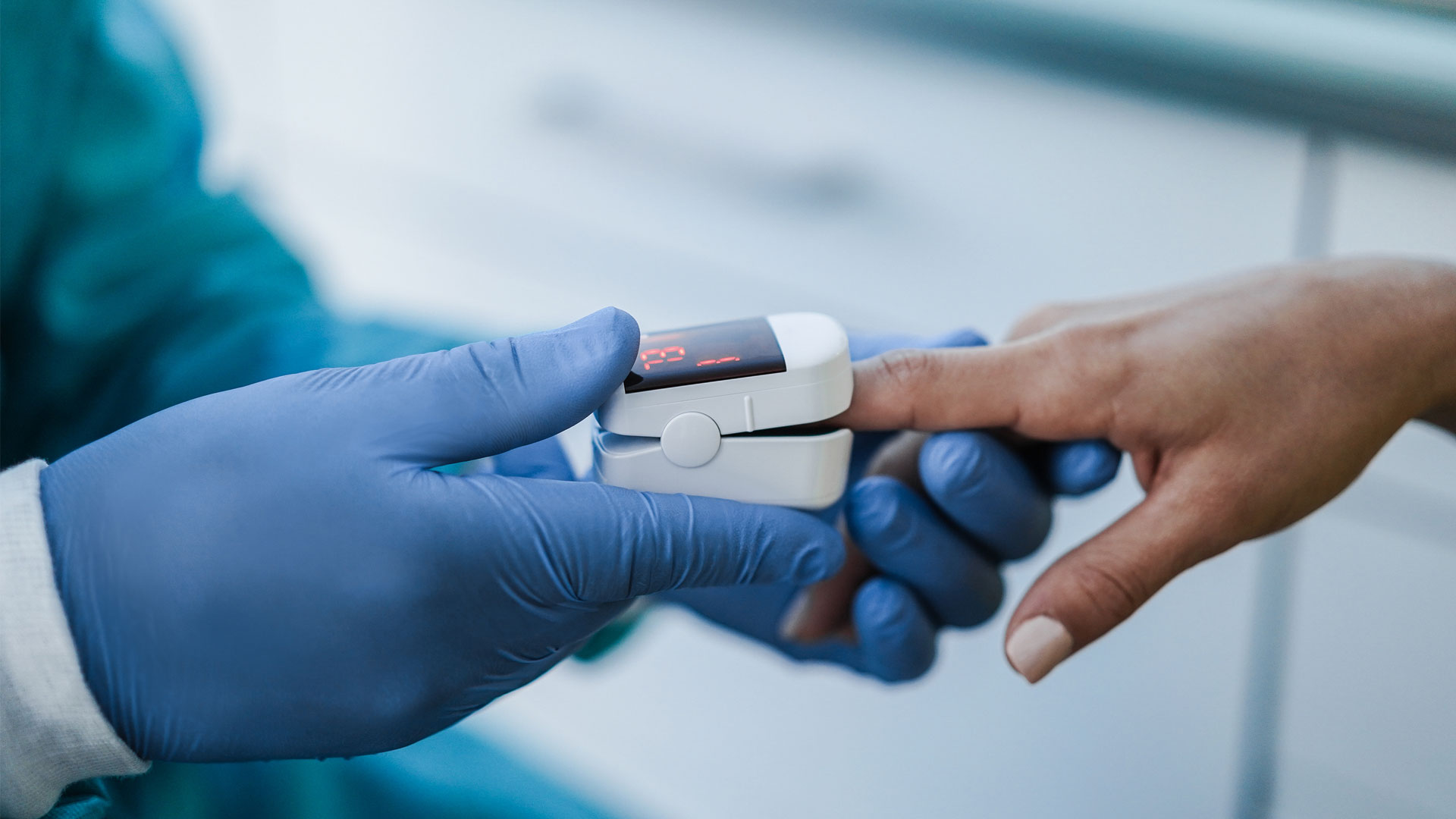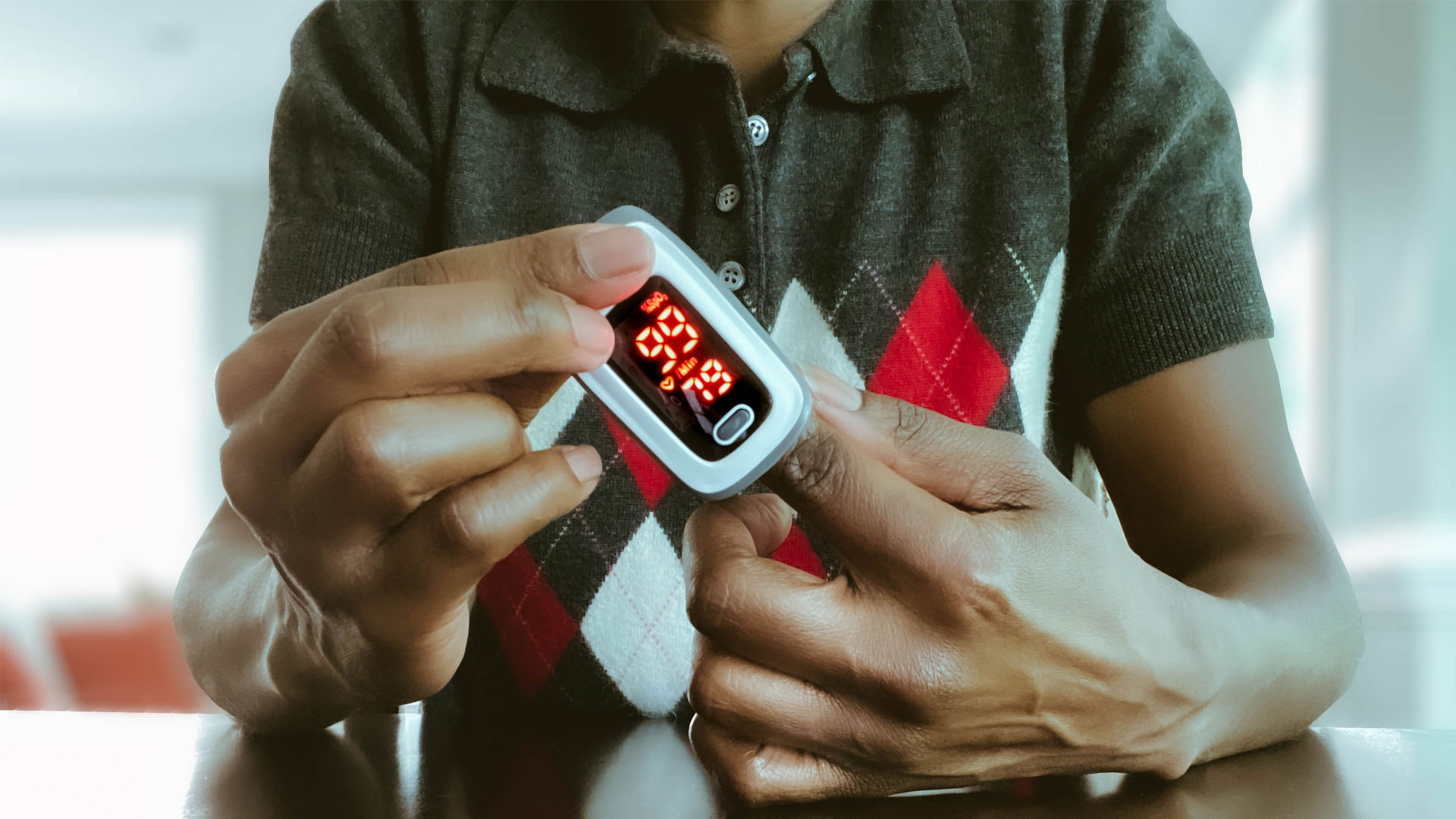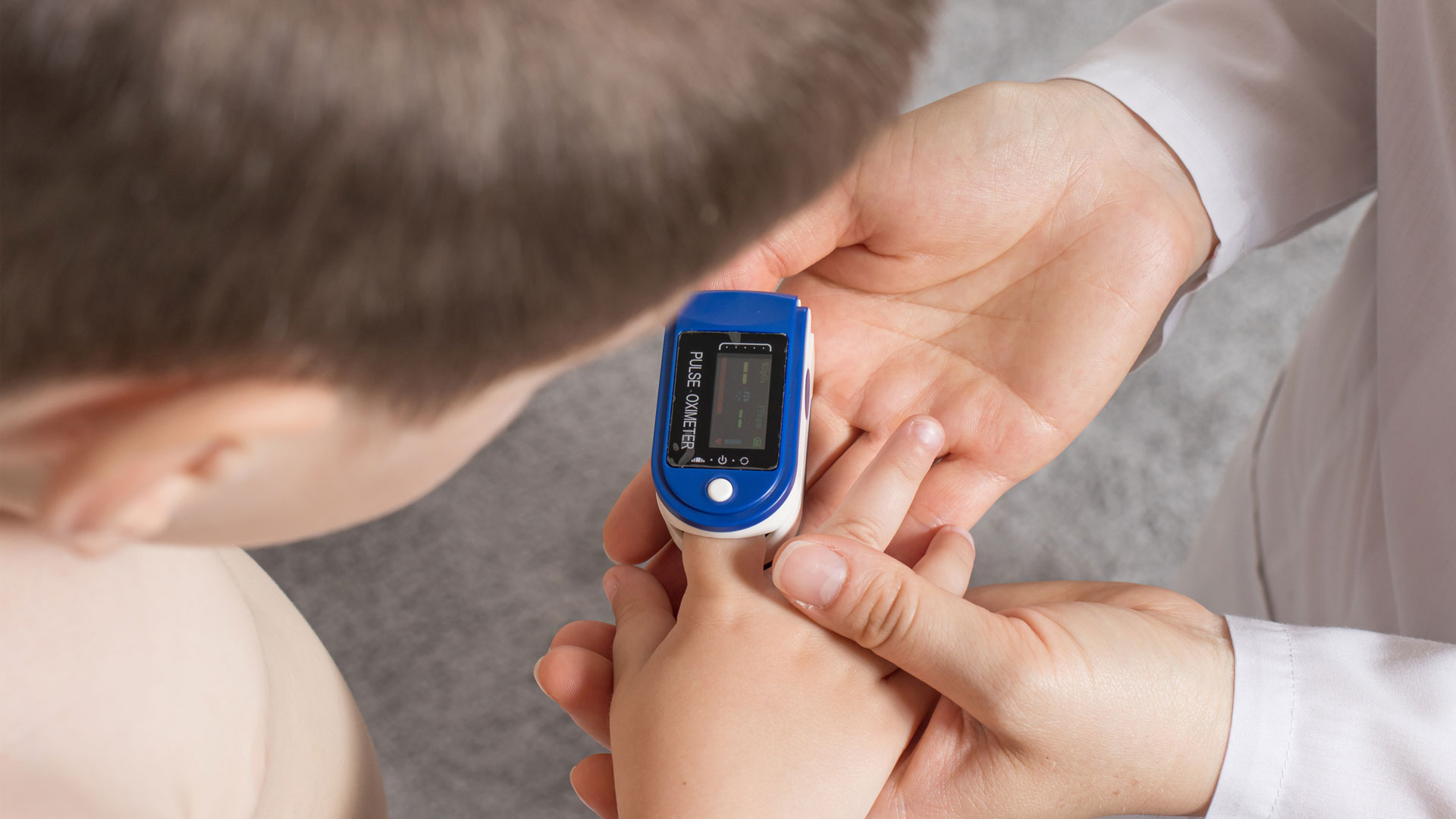How do we know when blood oxygen is too low?
We've quizzed the experts on how to find out what blood oxygen is too low so that you can measure your levels yourself and monitor them accordingly

How do we know when blood oxygen is too low? Blood oxygen levels should ideally be kept within a specific range. This is because oxygen-infused blood maintains everything from your brain functionality to keeping your fingers moving correctly. If your blood oxygen is too low, and levels fall outside the ideal range, this is a serious indicator that your lungs are not loading the right amount of blood cells with oxygen, which affects your heart’s ability to circulate oxygenated blood throughout the rest of your body. If the body isn’t distributing the right amount of oxygen to your heart, this can seriously impact your health, according to a report by the Centers for Disease Control and Prevention.
With the rise of the best fitness trackers that measure the amount of oxygen being carried by blood cells through your system, keeping an eye to check if your blood oxygen is too low has become easier than ever. Fitness trackers that offer this added functionality can help you manage the right blood oxygen percentage for your body and even detect potential health problems. For example a tracker might alert you to prevent oxygen saturation levels dipping from extreme exercise conditions, like high altitude mountain hiking. For more information about fitness trackers, read our how accurate are fitness trackers? guide.
Here, we delve into the science surrounding blood oxygen levels, including how to measure them, what normal oxygen levels should be and how to find out if your blood oxygen is too low.
What are blood oxygen levels?
Put simply, your blood oxygen level is the measure of how much oxygen your blood cells are carrying. Maintaining the right balance of oxygen-rich blood is vital for your health.
Dr. Mark Bratby, Deputy Medical Director at Veincentre, told LiveScience, "Our bodies are fuelled by glucose and oxygen, which are consumed to create energy to drive cellular function, with waste products of water and carbon dioxide. We breathe in oxygen from the atmosphere, and this is taken up in the lungs by haemoglobin in red blood cells in the form of oxyhaemoglobin which is then transported around the body and the oxygen is then released within the tissues where it is needed."

Bratby is a Consultant Interventional Radiologist and was appointed Medical Director for Veincentre in November 2021. He trained at Cambridge University and Charing Cross and Westminster Medical School (qualified 1998) and was awarded a Distinction in Medicine. Bratby previously worked for 21 years in the NHS with 11 years as a Consultant Interventional Radiologist at Oxford University Hospital.

Dr. Bratby continued: "The oxyhaemoglobin molecule then changes structure into deoxyhaemoglobin, ready to accept oxygen from the lungs. Oxyhaemoglobin gives blood its bright red colour, deoxyhemoglobin gives blood a purple-blue colour."
Here is a fascinating fact about blood oxygen levels: the transport of oxygen to the cells of the body is one of the most critical functions of the cardiovascular system and it is in the microcirculation where the final local determinants of oxygen supply, oxygen demand, and their regulation are decided, according to a Microcirculatory Society study.
Get the world’s most fascinating discoveries delivered straight to your inbox.
- Related: What are cardio heart rate zones?
How can blood oxygen levels be measured?
You might ask yourself, why do I need to keep track of my blood oxygen levels? Well, because your blood oxygen levels are not routinely checked by your doctor — unless you are showing signs of a health condition, such as breathing difficulties or chest pain — it’s vital you make a conscious effort to self-health track to monitor any patterns of change in your body. By using a fitness tracker to measure these levels, you in turn provide more data to clinicians with a potential for earlier diagnosis and guidance of treatment, according to a study that appeared in the journal Molecular Diversity Preservation International on the importance of wearable health devices.
Blood oxygen levels can be measured in a variety of ways, ranging from those that provide the most accurate results to those which are less accurate than other forms.
"The most accurate measure of oxygen in blood requires a blood sample tested in a blood gas analyzer machine to measure the partial pressure of oxygen dissolved in blood," said Dr Bratby. "However, this test is usually only performed in an unwell patient in hospital if there are other concerns about how much oxygen is in the circulation and abnormal results from non-invasive measurements of oxygen in the blood." In this situation, medical staff would want to know the oxygen levels in the arteries which requires taking blood.

However, if the thought of a blood test puts you off, there are other options. The most widespread method used to measure blood oxygen levels is by a non-invasive pulse oximeter that you can use yourself. An oximeter is a device that you attach to your finger. But be sure to remove any nail polish and jewellery before taking your measurement, as these external factors can cause the pulse ox reading to be lower than normal.
"This method relies on shining two different wavelengths (one red light, the other infrared) of light through a translucent part of the patient’s body, usually a fingertip or earlobe. Absorption of light at these wavelengths differs between blood loaded with oxygen and blood lacking oxygen. The processor in the monitor is then able to calculate the oxygen saturation. Oxygen saturation measures the percentage of haemoglobin carrying oxygen," explained Dr Bratby. Pulse oximeter devices are widely available online and can also be purchased in many pharmacies.
Many smartphones and fitness trackers now include an added blood oxygen level feature that offers consumers more insight into their overall health. However, a report in the Centre for Evidence-based Medicine, warned they were not clinically accurate when compared with other forms of measurement.
How do we know when blood oxygen is too low?
Understanding what a normal blood oxygen level reading is for you, is determined by many factors, including your age, whether you are fit and healthy, and any underlying illnesses that you might have. If you tick all the right boxes for fitness and age, a normal reading is considered between 95% and 100%, according to the Mayo Clinic.
Dr Bratby continued: "Oxygen saturation only starts to fall when the partial pressure of oxygen in the blood falls to a significantly low level. Partial pressure of oxygen is normally 80 -100 mmHg with oxygen saturation in the range of 95-100%." If the oxygen saturation falls to 90% then this would correlate with partial pressure of oxygen of 60mmHg, asserts Dr Bratby. "If the oxygen saturation level falls below 90% then that level is considered low and called hypoxemia (low oxygen levels). Oxygen saturation levels below 80% can compromise organ function and should be urgently addressed."
There are a number of factors which contribute to the maintenance of the supply of oxygen to the body according to a report by The National Center for Biotechnology Information. These include having enough oxygen in the air you breathe, the lungs being able to inhale the oxygen carrying air and the blood stream being able to circulate the blood containing oxygen throughout your body.
"Low oxygen saturations can occur at high altitude, with lung or heart problems, or due to generalised severe illness. Common causes include anaemia, asthma, emphysema, pneumonia, pulmonary embolus, congenital heart defects and medications that can depress breathing (ie morphine like compounds)," explains Dr Bratby.
On the other hand, too high a reading can lead to oxygen toxicity. This is lung damage that happens from too much exposure to supplemental oxygen pressures. It can cause coughing and breathing issues.
No matter what your blood oxygen level is, whether you want to increase levels, or you simply want to keep track of your blood oxygen in future, it’s always important to consult with your doctor if you see any changes to your health conditions.
This article is for informational purposes only and is not meant to offer medical advice.
Kirsty is an accomplished writer specializing in the health, beauty and fitness industries. She has previously written for Fit&Well, LiveScience, City A.M., Global Blue, Grazia and the Sunday Telegraph in the UK.
You’ll find her running around Windsor Great Park most mornings with her youngest in the pram and her oldest scooting by her side. Kirsty loves trying/enduring the latest workouts and her latest obsession is an at-home Lagree microformer. She also enjoys rustling up nutritious family meals with fruit and vegetables harvested from her allotment.



